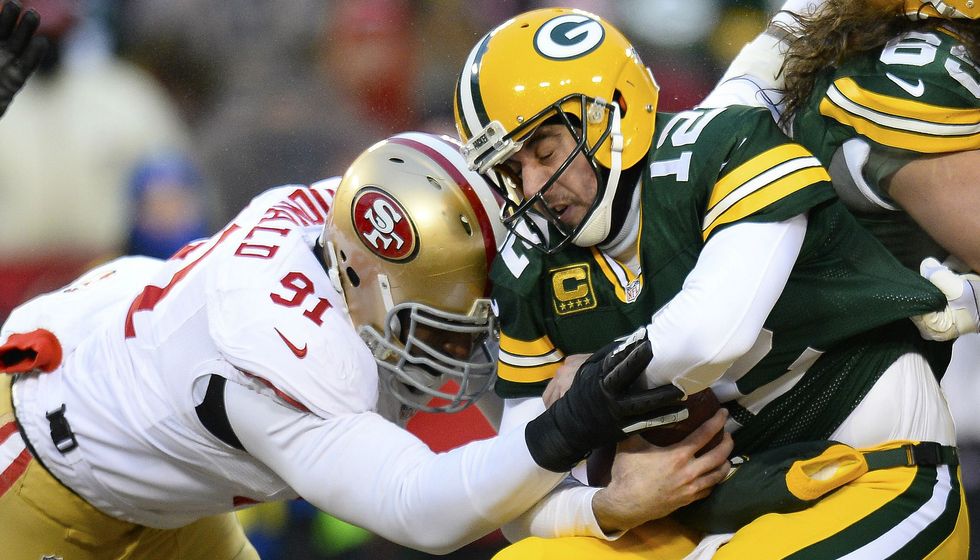Chronic Traumatic Encephalopathy is an epidemic hovering over football players, especially those in the NFL. The disease cannot be studied in the living, only the deceased, which makes current football players of all levels wonder whether or not they are currently living with it.
Most players are unaware of the effects CTE can have on the body long after their football careers are over. This may also be because studies on deceased football players are rather new since the disease was only recently discovered by neuropathologist, Dr. Bennet Omalu in 2002.
Dr. Omalu first coined and discovered CTE in former Pittsburgh Steelers center, Mike Webster, who died at the age of 50. Omalu published his discovery to bring awareness to the deadly effects of football, however, the NFL attempted to silence him for years, afraid of the backlash this information would bring to the league.
Over the last couple of years since the disease has caused more and more commotion, several players have come forward claiming that the teams they play for tried to silence them regarding their suspicion of CTE in themselves. It has become a hot topic so much so that a movie was made about Omalu and the disease in 2015.
A majority of players are not informed enough to make an educated decision about whether or not to continue their career after they receive multiple concussions – not every doctor advises his or her patients to medically retire. In turn, they continuously suffer blows to the head, only increasing their chances of developing CTE in their brains.
According to the study, Clinicopathological Evaluation of Chronic Traumatic Encephalopathy in Players of American Football, done by Jesse Mez, MD, MS and colleagues for the JAMA Network, 177 out of 202 deceased former football players were diagnosed with CTE. Of both pre-high school players researched, neither had traces of CTE, which is not to say that they did not have other strands of brain damage. 3 of 14 high school players, 48 of 53 college players, 9 of 14 semi-pro and 7 of 8 Canadian Football League players had the disease in their brains. The most astonishing ratio, however: 110 of 111 (99%) NFL players had CTE.
Of these results, neuropathological severity of CTE was seen through mild and severe indications including; behavioral or mood swings, cognitive and depressive symptoms, anxiety and signs of dementia. Suicide was the third leading cause of death amid those studied. Offensive and defensive lineman were most prone to having the disease.
The JAMA Network defines CTE as a, “…progressive neurodegeneration associated with repetitive head trauma,” and concludes that, “In a convenience sample of deceased football players who donated their brains for research, a high proportion had neuropathological evidence of CTE, suggesting that CTE may be related to prior participation in football.”
Paul S. Auerbach, MD, MS, advocates for the rules of football to change in order to mitigate what he calls, “An epidemic of [traumatic brain injuries]” within professional, collegiate and high school associations. He determines that, “The evolving consensus is that unless there is a way to reduce the number of TBIs caused by the sport, football will remain a threat to the brains and health futures of the players, including impaired cognitive function and reasoning, memory loss, emotional depression, and other sequelae that profoundly erode quality of life,” in his study for the JAMA Network, It’s Time to Change the Rules.
Auerbach proposes six new rules that need to be implemented into football associations to give players, coaches, friends and family members peace of mind. His rules lay out the initial foundation for the direction he believes football should be headed including no direct tackling with the helmet, no forearm blows to the head, no more than two days of full contact practice in one week, if one is suspected to have a concussion they must avoid contact for four weeks and any coach who allows a player to continue with concussion symptoms will be subject to suspension.
These rules would allow players to be more open when they suspect to have a concussion, as many players neglect to report it because they fear the loss of playing time. A shift in football programs around the world would mean players’ health will become the number one priority, rather than entertainment and playing time. Auerbach’s rules are subtle but could prove to be effective in the long-run and possibly save lives.
Links to JAMA Network sources:
https://jamanetwork.com/journals/jama/article-abstract/2645104

















